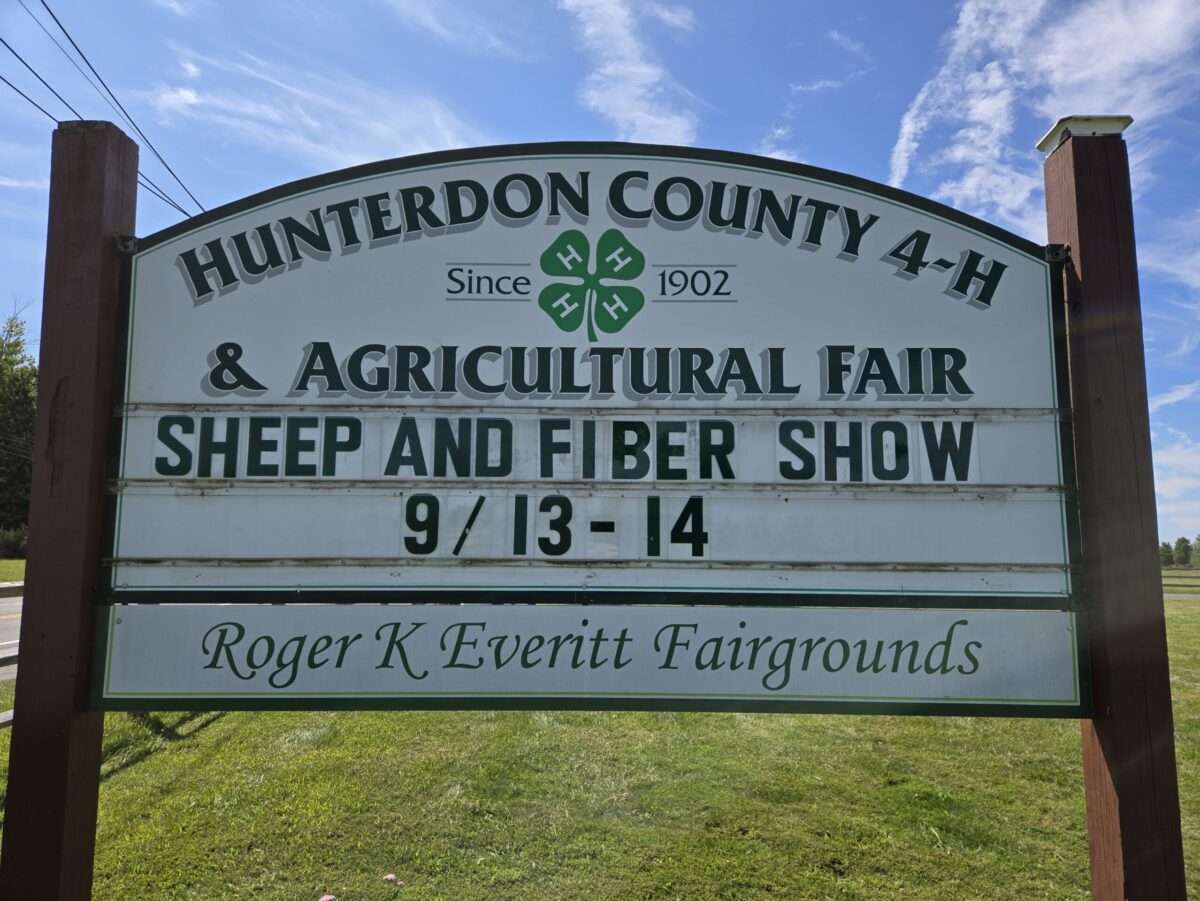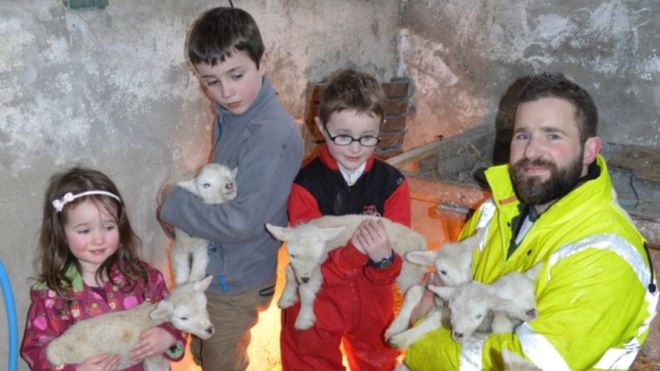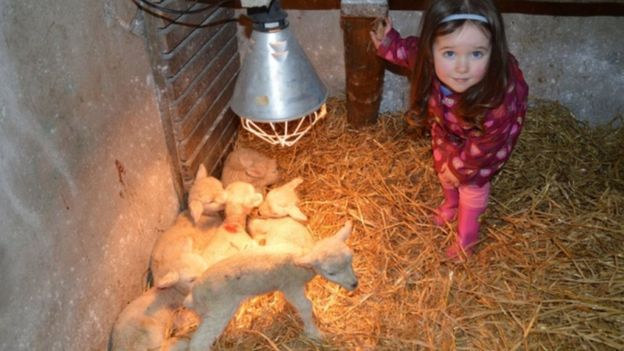On a chilly April morning Chris Basford, the flock manager at North Star Sheep Farm in Windham, sits on a pile of hay, bottle-feeding a 10-day-old lamb.
“All done, little girl,” he says, as he gently rubs her charcoal-colored ears.
Basford, 28, started his day at dawn. There’s no telling when he’ll be able to head home for a few hours sleep.
“I sleep when I can get a chance,” he says. “You can never really plan, because there’s always something. You’re ready to leave at the end of the night, and another one’s having a baby.”
Welcome to lambing season at Maine’s largest sheep farm.
For Basford, the sight of a healthy newborn still has the power to thrill.
“I’m always happy to see the moms accept their babies and know that I’ve helped them.”

Chris Basford, the flock manager at North Star Sheep Farm, bottle feeds a 10-day-old lamb. When the spring lambing season is underway it’s all hands on deck at Maine’s largest sheep farm.
North Star Sheep Farm is owned by Phillip Webster, a fifth-generation sheep farmer, and his wife, Lisa. The round-the-clock demands that come with this rite of spring are just part of the job.
“We’re there if there’s an issue, if there’s a problem, if there’s a mama in danger,” says Lisa, 53. “You never know when a situation is going to arise that you have to take care of.”
They average about 40 newborns a day – that’s more than 3,000 lambs born from late February through May.
“There are days when it feels like you’re working in an emergency room,” says Phillip, 54. “Everything happens so fast.”
Come spring, North Star Sheep Farm’s eight-person crew slips into high gear.
“Farming isn’t a part-time job,” Lisa says, “unless you have just a very few animals, and that’s perfectly fine. But if you really are all in on this, it’s a lot of hours.”
And a lot of territory to cover.
Along with their 125-acre property in Windham, they lease two farms in New Gloucester.
Most of the spring and fall lambing is done in Windham. The pregnant ewes spend the few days before they give birth – and about three days afterward – in what can best be described as the farm’s maternity ward: a series of individual pens lined with fresh hay in two attached barns. Separating each mother and her babies from other ewes encourages them to bond. Most will give birth to twins or triplets.
When the lambs are about 1 week old, they roam free within the confines of the fenced-in pastures.
“The way we farm and the way we care for our animals is exactly as it was when we were a flock of 125 sheep,” Lisa says.
“One of the things that’s important to me and to my staff is we’re going to give (the animals) the best life they can possibly have,” Phillip says. “They’re not going to be (kept) in little small areas or boxed in.”

Lisa Webster, who owns North Star Sheep Farm with her husband, Phillip, holds a lamb in one of the barns where pregnant ewes wait to give birth. Lambing season is a round-the-clock job for the Websters and their eight-person crew.
The Websters also raise pigs, rabbits and chickens. But sheep are the mainstay.
“Sustainability is everything,” Phillip says. “We try to figure out ways we can use all of our products. That goes right from wool to meat to manure.”
North Star sells its wool to the Bartlett Mill in central Maine, where it’s made into yarn. It sells its meat to a number of retailers in Maine, including Whole Foods, Hannaford and Rosemont Market, and also provides lamb to some of Maine’s higher-end restaurants and to out-of-state retail and food service customers.
Phillip makes all the deliveries himself, driving hundreds of miles every day throughout Maine, Vermont, Massachusetts and upstate New York. He can’t remember the last time he had a day off. But you won’t hear any complaints from him.
“It’s a great life,” he says. “You’re not gonna get rich at it, but if you work really hard you can make a living at it.”
Just don’t expect to get much of a break when spring turns to summer.
“Just as we get all the babies on the ground, the grass is going to start growing. So then we can start haying morning, noon and night,” Lisa says with a laugh.
Source : Press Herald, 2016 April 11
Video available at original website, requires Flash player.







